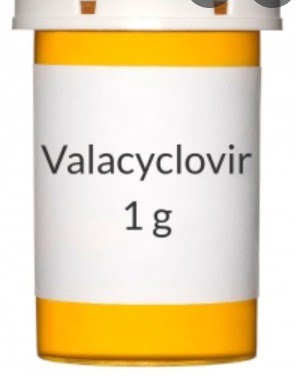Transmission: How is Genital Herpes Spread?
- Updated on: Jul 1, 2024
- 5 min Read
- Published on Oct 3, 2019


What is Genital Herpes?
Genital herpes, a prevalent sexually transmitted infection (STI), is caused by the herpes simplex virus (HSV) and can be transmitted via dermal contact during sexual encounters. Asymptomatic carriers, as well as those presenting with symptoms like genital, anal, or oral pain, itching, and lesions, can transmit the virus. While there is no definitive cure for this condition, antiviral therapies can mitigate symptoms and reduce transmission risk. Utilization of prophylactics, such as condoms, is recommended to further minimize transmission potential.
Can HSV-2 be transmitted through oral sex? What you should know about transmission of HSV type 2 (herpes simplex type 2)?
Herpes simplex virus type 2 (HSV-2) has a characteristic of getting transmitted by “skin-to-skin” contact. It can be transmitted even when there are no herpes lesions visible on the skin. Although HSV-2 is rarely contracted through oral sex, transmission is possible in some cases, if one of the sex partners is having genital herpes. People with compromised immune systems are especially at risk.
One of the necessary conditions for the transmission of HSV-2 is skin to skin contact. It cannot be transmitted through semen, from touching toilet seats and other objects, or from using hot tubs even if it is used by an infected person.
Transmission of HSV-2 happens from one person to another when the infected areas come into contact with mucous membranes or open areas on the skin of the uninfected people. A mucous membrane is generally a moist lining found in certain parts of the body, including the vagina, anus, and mouth.
Vaginal or anal intercourse, generally facilitate the passage of HSV-2 from one person to another. It is uncommon to transmit HSV2 through oral sex but not impossible. If a person infected with HSV-2 in genital area comes in contact with the mucous membrane in another person’s mouth, it may cause oral herpes.
More: Genital Herpes: Causes, Symptoms, Diagnosis, Treatment
HSV 2 oral transmission rates: Can HSV-2 be transmitted through kissing? Can HSV-2 be transmitted to the mouth?
HSV-1 is more likely to be transmitted through kissing. HSV-2 is generally transmitted by sexual skin to skin contact. However, it is possible for HSV-2 to get transmitted through your mouth, if you had oral sex with a partner having genital herpes.
If you have an active HSV-1 infection and perform oral sex with your partner, you can transfer the infection to your partner’s genitals, causing genital herpes. HSV-1 infection transmitted during fellatio, cunnilingus, or analingus is a case of genital herpes.
Both types of herpes can be transmitted even in the absence of any symptom. You should abstain from indulging in any form of sex with anyone who has a sore on their genitals, anus or mouth to help avoid getting infected with these contagious viruses. For sexually active individuals, latex or polyurethane condoms can help lower the risk of transmission of genital herpes. But, since condoms do not cover all of the infected area, genital HSV-1 and HSV-2 can still be contracted while using a condom.
Can HSV-2 be transmitted through blood? Can a person with HSV2 donate blood?
Since genital herpes is not present in the blood and can pass from one person to another only via direct skin to skin contact both orally and sexually, it is impossible to transmit HSV-2 through blood. A person suffering from HSV-2 can still donate blood.
More: Frequently Asked Questions (FAQs) About Genital Herpes: DiseaseFix Fact Sheet
More: Herpes Simplex Virus (HSV): Know About HSV-1 and HSV-2
Male-to-female transmission or female-to-male, which one is riskier? What is female to male transmission rate of HSV-2?
Generally, females are more prone to getting an HSV infection than males, because mucous membrane constitutes the majority of the vagina, although there are mucous membranes on the male genitalia (the head of the penis, the foreskin, and the urethra) also.
In comparison to the vagina, there is less exposed surface area on the male genitalia that is made of mucous membranes. That is why the location of the body in contact with the virus is a determinant of HSV transmission rather than the gender of the person in question, because of the exposure to mucous membranes themselves.
When there is a contact by an infected area with a mucosa, there is greatest risk of transmission of HSV2, such as through: the mouth, the lips, the nostrils, the eyelids, the ears, the anus, the vagina, head of the penis, the inside of the prepuce, the glans clitoris, the urethra, and the clitoral hood.
There are some estimated figures from numerous studies about HSCV-2 transmission probability. In case an infected male and an uninfected female:
- don’t have sex during outbreaks, avoid regular use of condoms, and the male partner doesn’t take a daily suppressive, the risk of transmission is about 10% per year, though there is a large range — from 7 percent to 31 percent — in different studies.
I there is an infected female and an uninfected male:
- and if they don’t have sex during outbreaks, avoid regular use of condoms, and the female partner doesn’t take daily suppressive, the risk of transmission is about 4% per year.
These figures and numbers are only representation of an ‘average’ sex life which incorporates vaginal penetration over the course of one year’s duration.
HSV 2 transmission probability: What is my risk of spreading herpes?
Transmission of HSV-2 to an uninfected partner can be attributed to different factors, and it is difficult to give precise figures about the probability of transmission of HSV-2.
Various Studies involving discordant couples, in which one partner has HSV-2 and the other does not, introduce various biases. Some of the generally observed facts you should keep in mind are:
- Women are more likely to acquire HSV-2 from an infected male partner then men are to acquire from women. The risk for a woman to acquire HSV-2 sexually is 10 percent per year on an average, from an infected partner, though a range of 7 percent to 31 percent exists in different studies.
- The risk of sexually acquiring HSV-2 from an infected woman is about 4 percent per year for an uninfected man.
- The risk of acquiring HSV-2 sexually reduces with having prior HSV-1 infection, but studies about it provide conflicting results.
- According to various studies, the risk of transmission of HSV-2 reduces by about 30 percent with the use of condoms, whereas daily suppressive therapy reduces the risk of transmission of herpes simplex type 2 by about 48 percent. The risk is even further reduced by taking daily suppressive therapy and using condoms, together, than either one measure alone, though it can’t be supported by reliable numbers from large studies.
- There is no reliable and available data on the rate of transmission for same-sex couples.
Are there any chances of repeat outbreaks in Genital Herpes?
Following the initial outbreak of genital herpes, subsequent episodes, termed recurrent outbreaks, can manifest. The frequency of these episodes varies, with the majority occurring in the first year post-infection and typically decreasing in frequency over time. Notably, these recurrent episodes are often less severe and of shorter duration than the initial outbreak. Prodromal symptoms, acting as precursors to a new outbreak, can present a few hours or days in advance, characterized by genital discomfort and tingling or shooting pains in the legs, hips, or buttocks.
Can I get herpes from a toilet seat? Can you get herpes simplex 2 from a contaminated toilet seat?
The herpes simplex (HSV2) can’t be alive outside of the body. It dies quickly, when it is exposed to the air. It’s nearly impossible to get the infection through contact with toilets, towels or other objects used by an infected person.
It’s less likely that you would get genital herpes from a toilet seat. Genital herpes is a sexually transmitted infection (STI) and spread by skin-to-skin contact.











